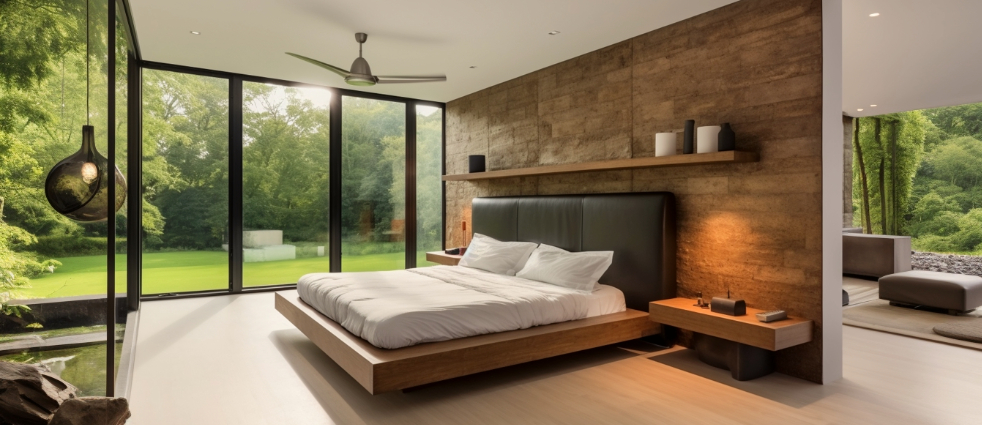Creating Multifunctional Zones With Floating Walls
As we seek to create more flexible and adaptable living spaces, innovative solutions like ‘floating walls’ have emerged, allowing us to design homes that cater to diverse needs and lifestyles. If you’re contemplating a loft conversion, you might have encountered this concept; if not, you’re likely wondering – “what is a floating wall?”. Well, read on to discover the answer, along with the benefits and careful planning it entails.
What is a Floating Wall?
A floating wall, as the name suggests, is a non-load-bearing partition that appears to be detached from the surrounding ceiling, walls, and floor. Its purpose is to provide visual separation within a large open space, preserving the sense of spaciousness while creating distinct zones for different activities. It’s open plan living with a twist – a clever way to divide and conquer without sacrificing the essence of open-concept design.
The Benefits of Floating Walls
What does a floating wall do besides dividing up a room? It’s a stylistic and practical solution to using space creatively. The adaptability of floating walls allows design considerations to lead, so your control of the space is far greater than if you were working within traditional architectural constraints. Take a look at the range of benefits you can enjoy from working with floating walls:
- Privacy and Separation. Floating walls discreetly divide spaces, providing a sense of privacy without creating a claustrophobic atmosphere.
- Functional Zoning. They delineate areas for different purposes, such as a work-from-home office, a cosy space for reading, or a dedicated play area for children.
- Versatile Design Options. Floating walls can be customised in height, material, and colour, allowing you to integrate them seamlessly into your interior décor style.
- Light and Airy Fee. Unlike traditional walls, floating partitions don’t block natural light, preserving the brightness and airiness of an open-plan space.
- Insulating Properties. When installed with insulating materials, floating walls can improve the quality of sound insulation. This is especially useful when zoning space.
- Preserves Natural Light. Floating walls don’t have to reach the ceiling, or walls. So the natural light that flows through your space can be perfectly preserved.
- Invites Air Circulation. The ‘incomplete’ nature of floating walls encourages the circulation of air in a space, which helps to maintain a comfortable temperature.
How My Build My Way Constructs Your Floating Wall

Before the construction of a floating wall commences, careful planning and design are essential to ensure its integration into your space. Experienced design and build companies like My Build My Way will first understand the purpose of your floating wall, its location, and dimensions. This process takes into account the room’s layout, structural considerations, and your specific needs for space division and functionality.
The foundation of a floating wall lies in its sturdy frame, typically constructed from robust timber studs. These studs are securely anchored to the floor and, where necessary, to the ceiling. It’s this robust framework that provides the necessary structural support for the wall, ensuring its stability and resilience.
Next comes consideration of any electrical outlets, lighting fixtures, or plumbing within the floating wall. These are incorporated into the frame’s design ensuring that any pipes or wires are hidden from view to achieve a clutter-free and aesthetically pleasing finish.
Insulation is integral to a floating wall’s construction as it provides thermal comfort and soundproofing benefits. The cavity within the wall is filled with insulating materials to regulate heat transfer and reduce noise transmission between different areas of the space.
Once the frame and insulation are in place, the surface is covered with plasterboard sheets. These panels offer stability to the wall and offer a paint-ready surface for decorating. A professional seamless finish is achieved by using plaster to fill and smooth down joins and edges of the plasterboard.
Finishing Touches and Customisation
The finishing touches add a touch of personalised elegance to your floating wall. Your chosen lighting fixtures, storage features, including shelves, drawers, and doors are integrated, achieving a blend of aesthetic sophistication and practical functionality. Finally, your floating can be painted and decorated to match your décor, seamlessly blending into its design, and adding a touch of sophistication to your living space.
Ready to Plan a Floating Wall in Your Home in 2024?
At My Build My Way, we’re excited to participate in your transformational home improvement projects. Our mission is to connect you with talented architects and reliable local building companies, including some of the UK’s most reputable ones. We ensure that you can secure the best contractor, at a competitive price.
Our service is not only reliable but also entirely free for you to use. Why wait any longer to explore the possibilities? Reach out to us today at 0800 2465453, and let’s start discussing your 2024 home improvements.

